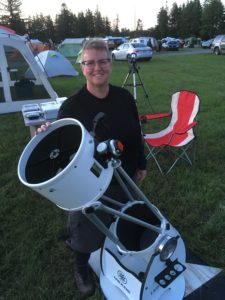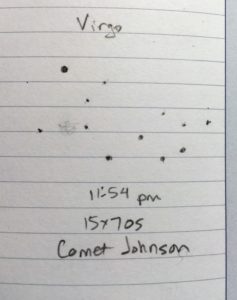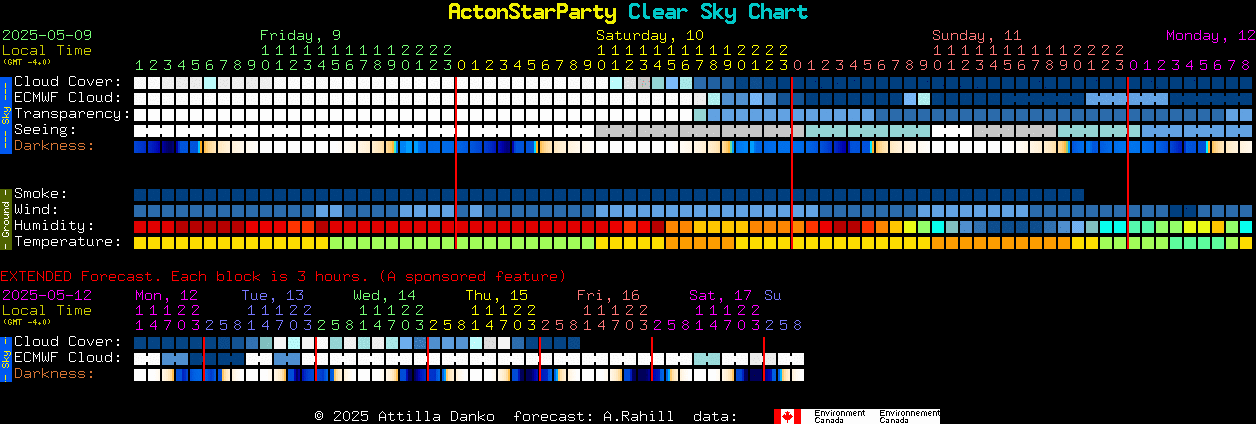This was our first trip to the Cherry Springs Star Party. I wrote a fairly comprehensive summary for the S&T site awhile back. Here are a few random photos from the trip. One advantage of being the Observing Editor at S&T is that I can stay late at work at draw my own star charts. Before going to Cherry Springs, I put one together for Comet Johnson (C/2015), and I have to say, it was admirably accurate.
Next year, remind me to park on the other side of the tent. I thought this would give us some privacy from neighbors on the west side, but it turns out they left for a hotel every night anyway. If I’d parked on the other side, I would’ve had better protection from the morning Sun.
One good thing about attending a star party within driving distance is that you can pack a lot of stuff in even a small car. This is the first star party in a long time where I’ve had at least one decent observing table. In an ideal world, Catherine and I would both have our own tables plus a couple of side tables. I prefer print atlases and they take up a lot of room. Plus, we both have 3-ring binders we use as observing notebooks, and then we both have sketch books. There’s pens and pencils, a bin for extra batteries, a bin for setting our lights (so I can always find it again in the dark).
I guess another advantage of working at S&T is that I can borrow one of the random scopes sitting around the office when I need to. My 10-inch is way to heavy to drag across state lines, so I bogarted the Lightbridge that lives on the landing of our office staircase for the week. Really easy to transport and set up, I would definitely consider buying one of these if I had $700 burning a hole in my pocket. I saw many 12-inch and 16-inch Lightbridges in use this summer. I think the 16-inch would fall into the “too heavy to move around” category for me, but I wouldn’t say no to the 12-inch.
As you can see from this photo, the Lightbridge is a good height for me (I’m 5′ 1″ tall). Like all Dobs, it can get a bit awkward when looking at objects close to the horizon (on this night, I was showing off the Andromeda Galaxy to other observers, basically from a crouched position), but when I’m 1/2-way up the sky or more, I find it very comfortable.
Catherine seems really comfortable with her refractor these days. She’s been using it for double stars, plus doing a lot of bino observing. This summer, she used the Irish Federation of Astronomical Society’s Binocular Certificate Handbook to build her observing lists.
We had one clear night of observing only, so I didn’t make much headway on my observing list. I had planned to do some mapping of the Virgo Cluster, but the light management on Saturday night was really, really bad. Our neighbors to the west opened their trunk at least 5 times, destroying my night vision over and over again. The experience was frustrating enough for me that next time I’ll take a little more time to think about how to isolate my scope from the public — not usually my goal at a star party, but possibly a necessary step to enjoy this one to the fullest.









